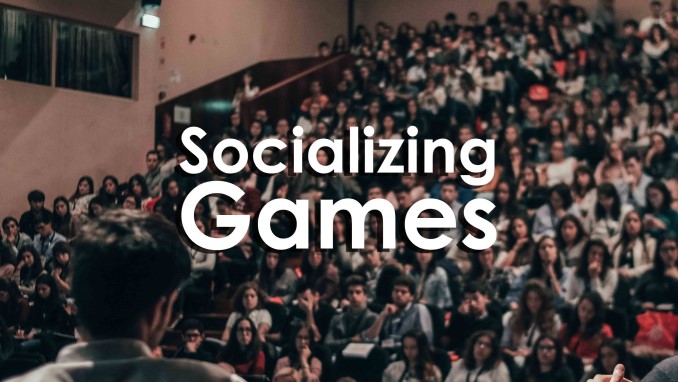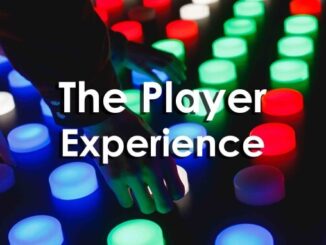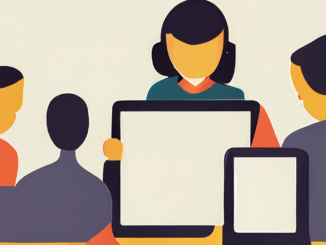
This article was originally published at UniversityXP and is re-published in Ludogogy by permission of the author.
Games are powerful tools that can be used to help students achieve their learning outcomes. That is the focus of games-based learning. Many educators have relied on games, in whole or in part, to help their students grow. Games alone are great for meeting the needs of students who want to grow their soft skills. But what about the other elements of games-based learning? How do players use, play, and develop from a socialized gaming environment?
What is the socialized game environment?
This article will review the positives of learning and gaming in a socialized game environment as well as how gamers, players, students, and educators may create a socialized learning environment. This article will close on the outcomes and applications of socialized gaming.
Positives of socialized gaming environment
Many of us may remember playing games as children and adolescents. Sometimes with video games and digital games this involved an afternoon alone with our Game Boy and a copy of either the Red or Blue Pokemon. But sometimes those gaming memories involved others as well. The relationship of others to gaming defines the socialized gaming environment. The creation of which significantly increases our perceived enjoyment of the activity. This enjoyment in turn can be used with games-based learning initiatives to further incentivize our players to keep playing and learning. Of course we can continue to use, games, gamification, and simulations for learning. Those have had fruitful outcomes in the past. But if we can combine those assets with a socialized gaming environment, then we can capitalize on the better and more immediate educational results from their application.
The creation of socialized communities
While we like to think that games immediately bring people together; they often do not. Rather, games can be used as the catalyst for forming a community. Games serve as the “glue” for getting people to stick together. Long-term interaction through game-play requires that players share similar characteristics, experiences, and often challenges. This makes the classroom an often ripe environment for games-based socialized learning. That’s because multiple individuals are all embarking on the same journey towards the same learning goals. This is paralleled in the games community as players come together and then disband as games (and content) shifts. Digital games-based learning helps the most students when they emphasize pro-social behaviors such as cooperation, support, and collaboration. Of course, instructors can also use table-top games aimed at the same goals. One of the best table top examples that promote cooperation are those designed by Matt Leacock. They include Pandemic, Forbidden Island, Forbidden Desert, and Forbidden Sky. Each one tests players’ abilities to collaborate and cooperate with one another in order to achieve a common goal. More serious players might consider games such as Mage Knight, Gloomhaven, and Spirit Island as options that further push the limits of what is possible from table top cooperative gaming.
Outcomes from socialized gaming
Very rarely are games alone the catalyst for helping students reach their learning outcomes. Rather, instructors use games through games-based learning in order to augment their instructional methods. So too, should they use games to further a socialized gaming environment for their students. They can do this by using games as a structure for setting up these types of relationships and connections between one another. One such exercise involves having students take the perspectives of other players. This can be done in table-top games like Codenames where players take turns being the clue giver as well as the receiver. When acting as one role serving the other, they can see how their actions invariably affect their teammates. In addition, it’s good to be able to relate player flexibility through game play. One of my favorite “team-building games” is Captain Sonar.
Here, two teams of four players compete against each other in mock submarines to sink the other team. Though, playing the real time version isn’t for the faint of heart. That’s because it puts your trust in your teammates (and your own flexibility to act quickly and decisively) to the test. Captain Sonar also requires that teams synergize and work together in order to reach a common goal if they are to have any hope of winning. This can be a very challenging endeavor for most players. A game as demanding as this may require a significant personal investment. And this is something that they may not yet be comfortable giving their fellow classmates and teammates. Planning is also required of players if they are to succeed in many games.
This is especially useful in another real time cooperative game Magic Maze where players must complete a common puzzle through only one action at a time. While many players may be playing together: only one person may take an action at any given time. This requires everyone to cooperative and collaborate ahead of time since they will also be racing against the sand timer. Finally, communication plays a huge role in not only games-based learning but the larger field of soft skill development and student growth. Communication with other players as well as with the instructors and the environment is paramount. A favorite new party game of mine Just One puts communication to the test as players are forced to communicate clues to others through single words. However, clever players will need to best understand their teammates in order to be successful.
Takeaways
This article reviewed the positives of learning and gaming in a socialized environment. It also covered how gamers, players, students, and educators may create a socialized learning environment through game play. This article was about the socialized atmosphere of games-based learning. To learn about the socialized atmosphere of gamification, check out the free course on Gamification Explained. If you have enjoyed this article – consider getting yourself lifetime access to his Games-Based Learning Digital Library containing all of the content from the past two Games-Based Learning Virtual Conferences; past webinars and courses he’s created; as well as his complete back catalogue of articles; podcast episodes; and videos. And more content is being added all the time.
Readers of Ludogogy can get a $50 discount on this valuable resource by using this link.
References and further reading:
Allen, S. (2018, July 26). The Hidden Third Option: The Use of Tabletop Gaming in Social Instruction – CLE: Choose Your Future. Retrieved January 1, 2020, from https://experiencecle.com/the-hidden-third-option-the-use-of-tabletop-gaming-in-social-instruction/.
Chen, A., Lu, Y., & Wang, B. (2016). Enhancing perceived enjoyment in social games through social and gaming factors. Information Technology & People, 29(1), 99-119. https://www.emerald.com/insight/content/doi/10.1108/ITP-07-2014-0156/full/html
de-Marcos, L., Garcia-Lopez, E., & Garcia-Cabot, A. (2016). On the effectiveness of game-like and social approaches in learning: Comparing educational gaming, gamification & social networking. Computers & Education, 95, 99-113.https://www.sciencedirect.com/science/article/pii/S0360131515300981
Eng, D. (2019, June 25). Simulations vs Games. Retrieved January 6, 2020, from https://www.universityxp.com/blog/2019/6/25/simulations-vs-games.
Eng, D. (2019, September 4). Game-Based Learning vs Gamification. Retrieved January 6, 2020, from https://www.universityxp.com/blog/2019/9/4/game-based-learning-vs-gamification.
Eng, D. (2020, January 3). Building soft skills with games. Retrieved January 6, 2020, from https://www.universityxp.com/blog/2020/1/3/building-soft-skills-with-games.
University of Jyvaeskylae. (2007, September 20). How Does Online Gaming Affect Social Interactions?. ScienceDaily. Retrieved January 1, 2020 from www.sciencedaily.com/releases/2007/09/070915110957.htm
Wilber, J. (2018, October 1). The Many Social Benefits of Playing Video Games. Retrieved January 1, 2020, from https://levelskip.com/community/The-Many-Social-Benefits-of-Playing-Video-Games.
- How do you Design Games for Flow State - 26th January 2024
- Accessibility in Games - 22nd November 2023
- What are Megagames? - 5th September 2023





Be the first to comment